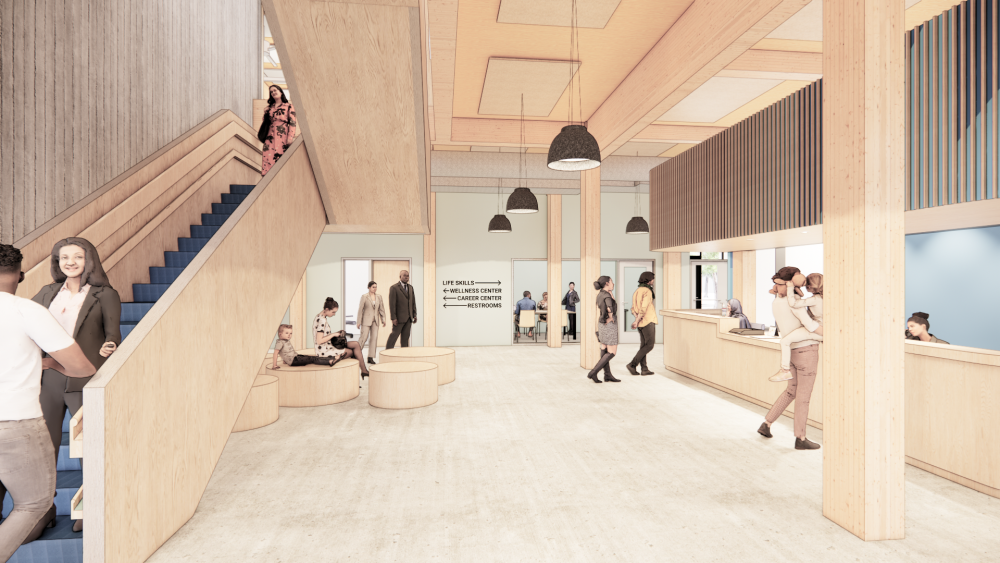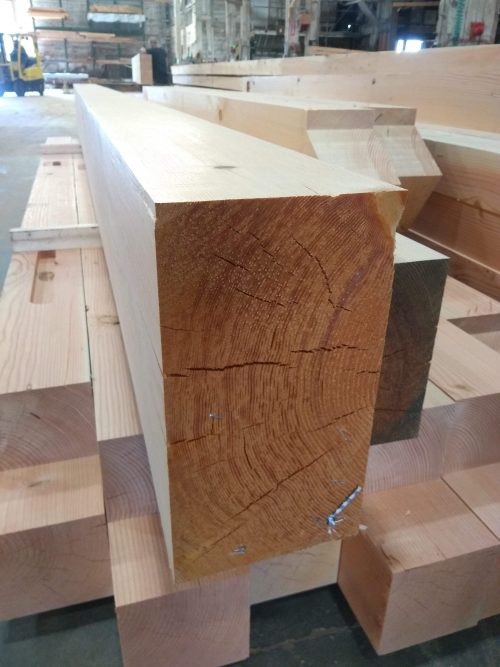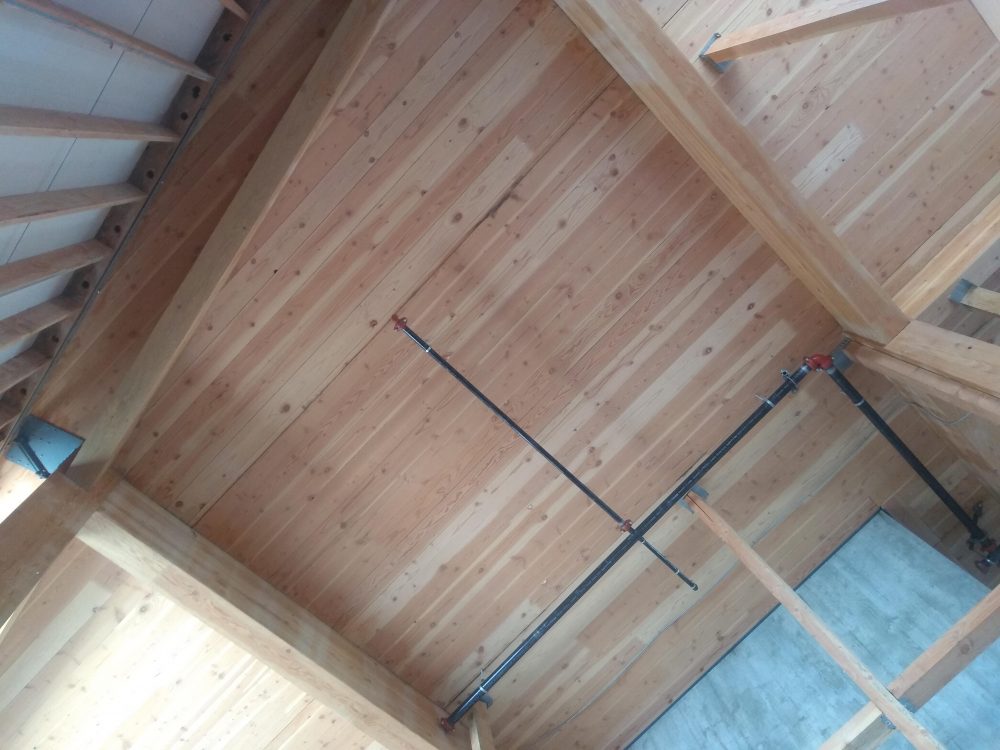This content was published: December 17, 2020. Phone numbers, email addresses, and other information may have changed.
College designs its first new building featuring high-tech wood construction
Photos and Story by Katherine Miller
Sustainability has long been an important force in architecture and design. But in recent years advances in engineered wood products have created exciting developments in green construction, including at Portland Community College’s redevelopment of its Portland Metropolitan Workforce Training Center (PMWTC).
At PMWTC, Bora Architecture & Interiors and Andersen Construction are designing and building the college’s first project with Cross Laminated Timber (CLT), a type of “mass timber” first developed in Austria in the 1990s. CLT creates large panels and beams by gluing smaller boards of wood together and alternating the direction of their grain so that the end product is stronger than standard wood construction.
PMWTC at a Glance
The college is seeking LEED Gold certification for the new Portland Metro Workforce Training Center. Sustainability features include:
- A projected operational energy use reduction that is more than 40 percent better than state energy code;
- Onsite renewable energy production via a rooftop photovoltaic array;
- A selection of healthy building materials: prioritizing interior and exterior materials free of harmful chemicals and with a low carbon footprint;
- An infrastructure that reduces single-occupancy vehicles, such as teleconference capabilities and secure, covered bicycle parking.
There are many environmental benefits to CLT construction like that it isn’t dependent on trees of large diameter and the fact that trees are a sustainable resource. In addition, trees and lumber sequester carbon their entire lives, while concrete releases carbon and it takes less energy to produce than concrete and steel. CLT structures are lighter and require lighter and smaller foundations, can be heated and cooled to the same comfort level as traditional construction using less power and its materials are produced very efficiently with digital modeling, which reduces construction waste.
In short, one study in Canada found that a five-story office building constructed with wood had less than a third of the global warming impact when compared with a steel and concrete building of the same size. The environmental benefits are helping PCC meet its sustainability goals for the bond improvements led by the Office of Planning & Capital Construction.
There are other positives to CLT that go beyond its green benefits, such as the high-tech fabrication that requires skilled workers, creating high-paying jobs. The harvesting of trees, done with good stewardship, can help boost Oregon’s stagnant timber industry and CLT products are much lighter than concrete and steel and thus easier to transport. Finally, the panels and beams are made off-site, so buildings go up faster than those made of concrete and steel, with less dust and noise.
There are important emotional and physical benefits for humans with using wood: Studies show that humans feel better and are more productive in built environments that maximize natural light and outdoor views as well as natural textures, patterns and materials. Biophilic design, a rapidly growing trend, is based on this thinking.
Becca Cavell, an associate principal with Bora, said CLT is a key part of the firm’s design for the new two-story Portland Metro WTC.
“The expressive wooden structure is warm and inviting, creating a friendly and welcoming building rather than an austere and institutional space,” said Cavell. “We are striving to create a design that is an asset to the college and its community and which provides a gathering center for the Cully and Concordia neighborhoods. Using CLT is one part of our strategy to achieve this vision.”
Although plywood and laminated beams have been around for many years, new building codes were recently updated to allow CLT structures to go up to 18 stories. According to Brad Nile, project executive with Andersen Construction, as the height of CLT buildings increases it tends to bring the cost differential down closer to traditional concrete and steel projects.
“The building design professionals in Portland have prioritized the use of CLT and are leading the country in ‘collective expertise,’ ” said Nile.
The longevity of a mass timber building is comparable to any other construction type, he added, provided that proper exterior maintenance is done to prevent water intrusion, and that any plumbing or interior leakage is promptly addressed.
CLT buildings also perform well under seismic stress because they are lighter and more flexible and because new lateral-force-resistance systems are available.
As for fire risks, CLT is engineered with “passive fire resistance” and can actually suffer less damage than steel beams in certain situations of intense heat.
Jeff Slinger, senior project manager at Andersen, said that PCC’s redevelopment of the PMWTC site has been gratifying for the entire team. “When you are making your community better it becomes more than just work,” he said. “For us, this project is not work, it is part of our mission as community members.”



